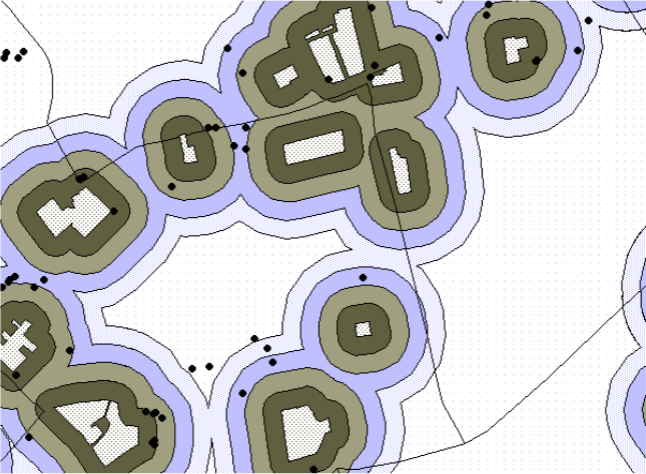Schools in Downtown Springfield Surrounded by 250 Foot Rings out to 1000 Feet
(Drug Dealing Incidents Charged as School Zones Marked as Dots)
Chapter 192 of 2012, approved on August 2, 2012, reduced all three major categories of drug mandatory minimums:
- It cut the radius around schools in which a two-year extra mandatory minimum for dealing applies from 1000 feet 300 feet. As the graphic above shows, this significantly reduced the applicable area. In fact, school zone arraignments dropped from 5,485 in calendar 2011 to under 1,978 in calendar 2013. See Annual Report of the Trial Court, FY14, page A-2.
- It reduced the minimum penalties for second offense dealing (from 5 to 3.5 years for heroin and from 3 to 2 years for cocaine).
- It raised the weight thresholds for trafficking charges and reduced penalties for each weight range.
Our previous estimates of the population of drug offenders in the state prison and the Houses of Correction, roughly 15% at both levels, only partially reflect the changes from 2012, especially at the State Prison level where there is a longer pipeline effect. It is possible that the population will drift further down so that any reductions due to repeal of mandatory minimums would apply to an even smaller base. On the other hand, the current population at both levels may be depressed by the evidence problems in the drug labs, suggesting that the populations may drift up.
Graphic source: Brownsberger 2001, An Empirical Study of the School Zone Law in Three Cities in Massachusetts, Figure 5.

